
- 0115 911 7222

Explore Muslim Hands

Al-Isra' wal-Mi'raj: The Story of the Miraculous Night Journey
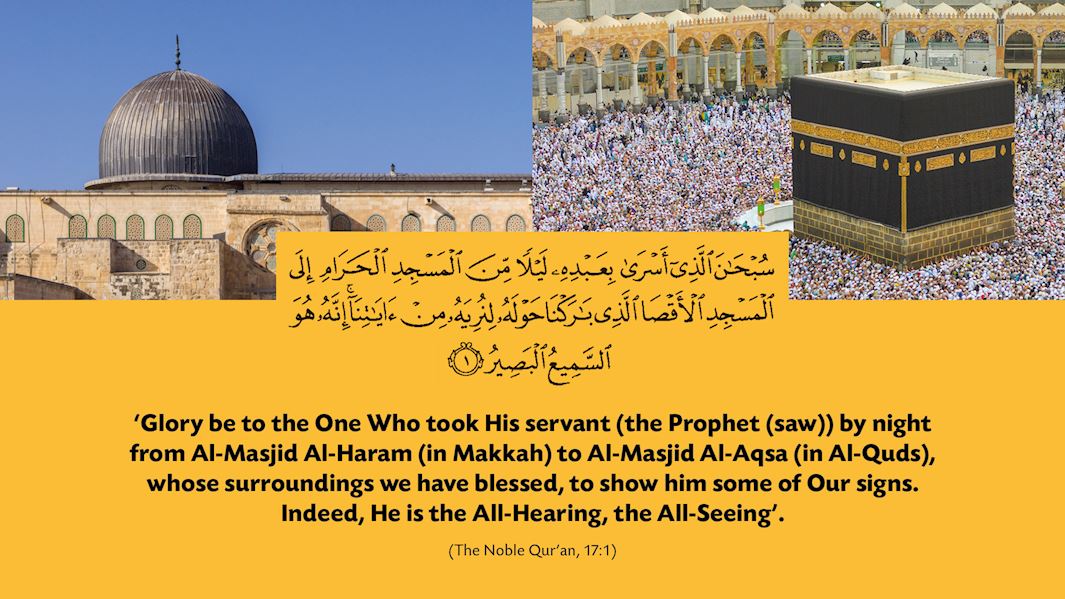
Al-Isra’ wal-Mi’raj (the Night Journey & Ascension) is a miracle second only to the revelation of the Qur’an , and it is therefore important that we don’t let this night slip by without reflecting on its lessons and its significance.
Many of us only know the basic story of Al-Isra’ wal-Mi’raj - that the Prophet (saw) was transported from al-Masjid al-Haram to al-Masjid al-Aqsa , from where he (saw) ascended to heaven. In fact, there were many stops along this incredible journey, and the story is packed with wonders and miracles. This blog will narrate the first half of the Miraculous Journey and we have included as much detail as we could. Enjoy!
Context of Al-Isra’ wal-Mi’raj
Al-Isra’ wal-Mi’raj took place during a time when the Prophet (saw) was facing intense hardship and pain. The Quraysh, who were his tribe and his family, constantly ridiculed, humiliated and oppressed the Prophet (saw) and his followers. Moreover, the Prophet (saw) had just faced the Year of Sorrow (‘Aam al-Huzn) , during which he (saw) lost his beloved wife Khadijah (ra), and his uncle Abu Talib, who was his protector and ally.
In addition to all these burdens, when the Prophet (saw) had travelled to Ta’if to spread the Islamic message, the people of Ta’if had rejected him in the most cruel way , sending their children into the streets to stone him until he left the city.
Having gone through so much grief and suffering, the Prophet Muhammad (saw) was given a truly beautiful and comforting gift. He was transported not only to the Sacred Sanctuary and through the skies, but ultimately into the Divine Presence, the source of all comfort and hope. One of the most important lessons of Al-Isra’ wal-Mi’raj, therefore, is that ‘with every hardship [there will be] ease’ (The Noble Qur’an, 94: 5).
Al-Isra’: From the Ka’bah to Al-Aqsa
When the Prophet (saw) was sleeping in the house of Umm Hani (ra) in Makkah he said, ‘the roof of my house was opened and the Angel Jibril [as] descended’ (Bukhari). Scholars reconciling between various narrations, say the Prophet (saw) was then taken to the Hijr, the semi-circular wall of the Ka‘bah, where the Prophet (saw) said that Jibril (as), ‘opened my chest, and washed it with Zamzam water. Then he brought a golden tray full of wisdom and faith, and having poured its contents into my chest, he closed it’. [Bukhari]
The Prophet (saw) continued, ‘I was then brought a white beast which is called al-Buraq [from the Arabic word barq, meaning lightning], bigger than a donkey and smaller than a mule. Its stride was as long as the eye could reach’. [Muslim]
It is narrated by Anas (ra) that Buraq was, ‘saddled and reined, but he shied from him (saw). So Jibril [as] said to him, “Is it from Muhammad [saw] that you do this? For nobody has ridden you who is more honourable to Allah than him!” He said, “Then he started sweating profusely”’. [Tirmidhi]
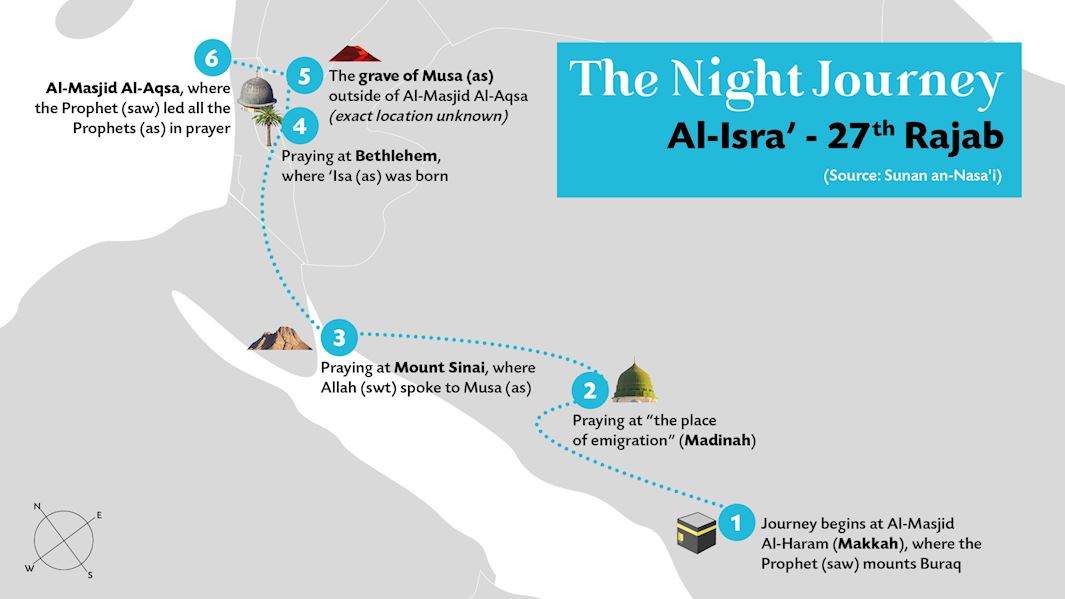
At several points along the journey, Jibra’eel (as) stopped Buraq and told the Prophet (saw), ‘Dismount and pray’. The first stop was at ‘the place of emigration’ i.e. Madinah - and soon after this night the Prophet (saw) would meet the Ansar and migrate to Madinah. The second stop was at Mount Sinai , where Allah (swt) revealed the Torah to Musa (as). The third stop was at Bethlehem , where ‘Isa (as) was born.
The fourth stop was the grave of Musa (as), ‘I happened to pass by Musa [as] on the night of my Night journey by the red sandhill whilst he was standing praying in his grave’ (Muslim). We know that his grave is located, ‘a stone’s throw’ away from the holy land of the Blessed Masjid Al-Aqsa (Bukhari). This incident clearly shows us an example of what the Messenger of Allah (saw) said about Prophets (as) after they pass away that, ‘The Prophets are alive in their graves praying’ (Abu Ya‘la).
Arriving at Al-Aqsa
Finally, the Messenger of Allah (saw) arrived in the holy city of Al-Quds (Jerusalem) and he said, ‘When we reached Bait al-Maqdis [literally ‘the holy house’ another name for the Blessed Masjid Al-Aqsa] Jibril (as) pointed with his finger causing a crack in the rock, and he tied the Buraq to it [at the western wall of the noble sanctuary]’ (Tirmidhi). Waiting inside were all 124,000 Prophets (as). Jibra’eel (as) led the Prophet (saw) to the front, and he (saw) led them all in prayer in this blessed space.
Some narrations indicate that the Prophet (saw) prayed ‘two units of prayer’ (Muslim) to greet the Masjid (known as Tahiyyat al-Masjid). This is one of the first examples of this established Sunnah of the Prophet (saw). It is also mentioned that Jibril (as) called the Adhan (call to prayer) before this practice was even established later in Madinah and that the angels from the heavens descended to pray behind all the Prophets in this sacred place – Subhan-Allah!
When the Prophet (saw) completed the prayer, he said, ‘someone said, “Here is Malik (as), the keeper of the Hell, so convey Salams to him”. So, I turned to him, but he preceded me in Salams’ (Muslim).
The Messenger of Allah (saw) also said, ‘The Prophets were presented to me, and Musa (as) was a thin man, it was as if he was from the men of Shanu’ah [a Yemeni tribe]. And I saw ‘Isa ibn Maryam (as), and the closest of the people in resemblance to him from those I have seen, is ‘Urwah ibn Mas‘†d (ra). And I saw Ibrahim (as), and the closest of the people in resemblance to him, from those I have seen, is your companion [meaning himself]. And I saw Jibril [as], and the closest of the people in resemblance to him, from those I have seen, is Dihyah (ra)’ (Tirmidhi).
Part of what the Prophets (as) discussed after praising Allah was about ‘the Hour’. Both Ibrahim (as) and Musa (as) stated that they ‘did not have any knowledge of it’. Whilst ‘Isa (as) ‘mentioned the Dajjal (anti-Christ) and said,
“I will descend and kill him, then the people will return to their own lands and will be confronted with Gog and Magog, who will, “swoop down from every mound” [Qur’an, 21:96]”’. [Ibn Majah]
Following this, the Prophet (saw) said, ‘Then I came out and Jibril (as) brought me a vessel of wine and a vessel of milk. Then I chose the milk, and Jibril (as) said, “You have chosen the natural state (Fitrah)”’ (Muslim).
The dominant opinion is that the Prophet (saw) alongside Jibril (as) then proceeded to the Noble Rock (as-Sakhrah al-Musharrafah) that is currently housed by the holy Dome of the Rock Masjid at the centre of the noble sanctuary (al-Haram ash-Sharif) of the Blessed Masjid Al-Aqsa. He (saw) ascended into the heavens for the next part of this incredible journey, the Mi‘raj, the Ascension!
Find out what happened next in our latest blog !

07 April 2024
Walk for the Children of War
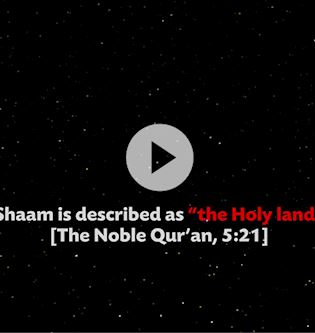
05 April 2024
Divine Connections Between the Blessed Lands
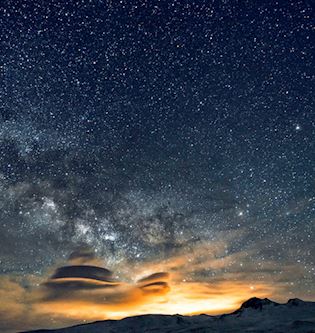
29 March 2024
Your Guide to Worship During the Last 10 Nights of Ramadan
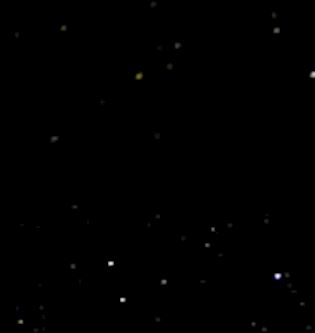
28 March 2024
Virtues of the last 10 Nights of Ramadan
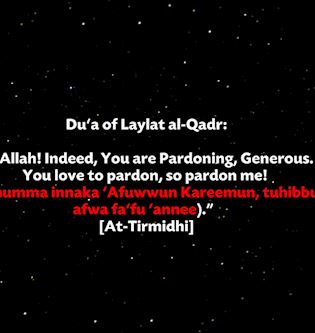
Virtues of Yemen
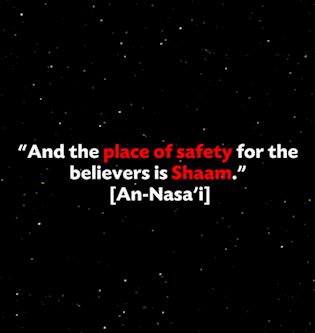
Virtues of Gaza
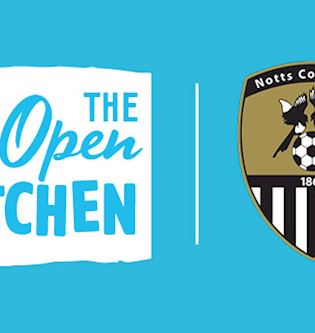
21 March 2024
Press Release: Meadow Lane to host Open Iftar with Nottingham charity Muslim Hands
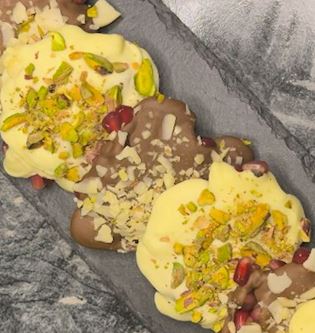
14 March 2024
Sunnah Recipes: Pomegranate Bark

Established in 1993, Muslim Hands is an aid agency and NGO helping those affected by poverty, conflict and natural disaster in over 20 countries worldwide.
As-Sunnah Foundation of America
Unity, Knowledge and Understanding for the Muslim Community
- Prophet Muhammad’s Life
- The Four Khalifas
- Family of the Prophet (s) (Ahl al-Bayt)
- Khawarij / Kharijites (Seceders)
- The Dynasties
- History of Wahabism
- Islam in America
- `Aqida (Doctrine)
- `Ibadat (Worship)
- Usul al-Fiqh (Principles of Jurisprudence)
- Tasawwuf (Purification of the Self)
- Recorded Talks (Suhba)
- Sermons (Khutba)
- Tajseem (Anthroporphism)
- Knowledge of Ghayb
- Ghunya on `Aqidah
- Usul al Fiqh (Principles of Jurisprudence)
- Ibadaat (Worship)
- Sahaba (Companions)
- Kharijites & Their Successors
- They Joy of Cyprus in the Association of Rajab
- Du`a at Arafat
The Night Journey: the Spiritual Significance of Isra and Mi`raj
Shaykh muhammad hisham kabbani.
Imam Sh`arawi asks, “What would make the Prophet’s sight swerve? Some say it was Jibril, but the Prophet had seen Jibril many times and Jibril was with him for the duration of the Night Journey and Ascension. It is irrelevant to say at this juncture that the Prophet’s sight did not swerve or go wrong, because if this was in reference to Jibril the Prophet had many opportunities to see him already. Allah doesn’t say anything irrelevant which is why I side with the majority of ` ulama (including Imam Nawawi) in saying that with his physical eyes the Prophet saw Allah (swt).”
The Prophet came all the way to the Divine Throne( `arsh ), reached qaaba kawsayni (the distance of two bow lengths), and reached the Paradise of Jannat al-Ma’wa near the Lote-Tree ( sidrat al-muntahaa ). After all this what could possibly make his sight swerve or go wrong? As mentioned above, the Isra and Miraj took place several years after Jibril brought the first revelation to the Prophet. Thus, it is illogical that after being seen by the Prophet so many times that now Jibril would have the potential to make his sight swerve.
Ma zagha al-basaru wa ma tagha
53:17 His sight did not swerve or go wrong.
Laqad ra’a min ayaati rabbihi al-kubraa
53:18 Indeed he saw the Greatest Signs of his Lord
Afa ra’ aytum al-laat wal-`uzza
53: 19 Have you seen Lat and ‘Uzza (two pagan idols)
Wa manaat ath-thaalithata ‘l-ukhraa
53:20 And the third one Manat (another idol)
Why does Allah mention these three false deities here immediately after mentioning the “ Greatest Signs of his Lord ” in 53:18? Scholars say that verses 53:19-20 name the idols that people were worshipping in order to contrast them to Allah (swt) mentioned in 53:18. If 53:18 referred to Jibril then it would not follow to mention the false idols after it.
That is the greatness of Sayyidina Muhammad. No one saw his Lord except for Muhammad, so he is the only real muwahhid . No one except Muhammad has real tawhid , only imitation tawhid .
Prophet Abraham was the father of the prophets and was granted spiritual vision to see the workings of the universe and Prophet Moses was granted to speak with his Lord. But Allah moved Prophet Muhammad with his physical body in defiance of the physical laws of the universe to the Unseen, a place where there is nothing and no possibility of anything to be there – laa khalaa wa laa malaa . Allah took Muhammad there and revealed Himself to him, in the manner He wished. How this was we don’t know. It is ghayb (unseen, unknown). But we know that this is not in reference to Jibril who was seen by the Prophet many times. We again recall the opinion of Imam Nawawi who said, “Most of the scholars say that the Prophet saw his Lord with the eyes of his head ra’a rabbahu bi `aynay raasihi.”
Looking at these verses in Surat Isra and Surat Najm we see that the Isra and Miraj was not like Allah showing Ibrahim malakut of the universe. Allah gave this universe to all of humanity whether in dunya or akhira . However Allah showed Muhammad something related to Himself “ ayatina Our Signs.”
Bukhari Volume 8, Book 77, Number 610:
Narrated Ibn `Abbas:
(regarding the Verse) “ And We granted the vision (Ascension to the heavens “Miraj”) which We showed you (O Muhammad as an actual eye witness) but as a trial for mankind.’ (17.60): Allah’s Apostle actually saw with his own eyes the vision (all the things which were shown to him) on the night of his Night Journey to Jerusalem (and then to the heavens). The cursed tree which is mentioned in the Qur’an is the tree of Az-Zaqqum.
Volume 7, Book 69, Number 482:
Narrated Abu Huraira:
What is Sunnah?
Latest additions.
- Jaliyat al-Akdar
- Sayyidina Muhammad ﷺ and Sayyida Khadijat al-Kubra ع
- Kissing the Thumbs when Hearing Rasoolullah (s) Name in Adhan
- Three New Books: Sunna Notes Series
- About Marriage to Ahl al-Bayt
- Who Are the Habashis?
- Islamic Shopping Network
- Naqshbandi Sufi Way

Return to top of page
Copyright © 2024 on Genesis Framework · WordPress · Log in
Get a free proposal
- +92-307-918-5010
LET’S TALK
- Islamic History
- Quran & Hadith
- Hajj & Umrah
- Contemporary Issues
- Family Life
- Islamic Blogs
Home » Islamic History » Al-Isra and Wal-Miraj: Story of the Prophet’s Miraculous Journey
Al-Isra and Wal-Miraj: Story of the Prophet’s Miraculous Journey
- Muhammad Haseeb A.
- September 21, 2023
Advertisement
- Posted in Islamic History
- Tagged with Islamic Figures and History , Prophet Muhammad (SAW)
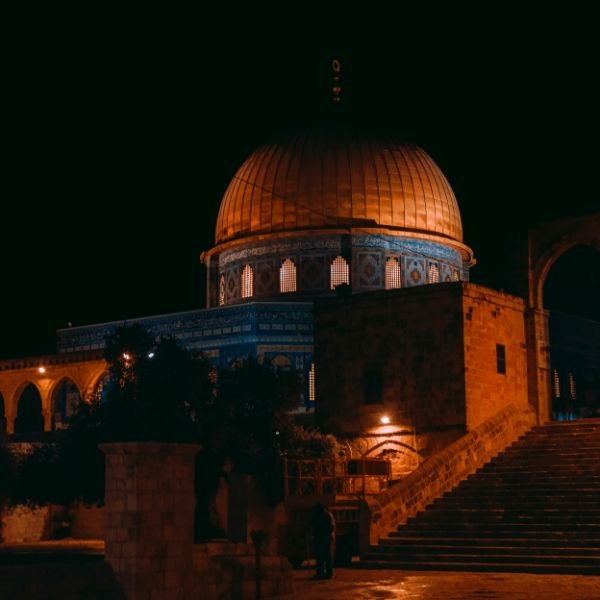
What is Isra and Miraj?
Prophet Muhammad (Peace be upon Him) had a miraculous journey from Mecca to Jerusalem and the heavens. This journey is known as Isra and Miraj in Islam. It has two parts: the night journey (Isra) and the Ascension (Mi’raj). During the night journey, He (SAW) travelled with the angel Jibril (Gabriel) on a winged horse called Buraq and prayed at the Al-Aqsa Mosque in Jerusalem with other Prophets (Peace be upon them). In the Ascension, He met a different Prophet at each level of heaven. Prophet Muhammad (pbuh) also witnessed many wonders and signs of Allah Almighty.
In another blog, we discuss the What is Shab-e-Barat?
Isra and Miraj in the Quran
The journey of Isra and Miraj holds great significance in Islamic history and is mentioned in the Quran.
Surah Isra verse of the Quran gives the first piece of evidence about Prophet Muhammad (saw) Night Journey, Lailat al Miraj:
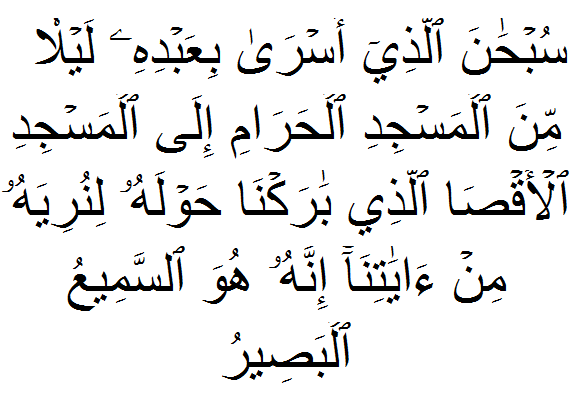
Glory be to the One Who took His servant Muḥammad by night from the Sacred Mosque to the Farthest Mosque whose surroundings We have blessed, so that We may show him some of Our signs. Indeed, He alone is the All-Hearing, All-Seeing. (Quran 17:1)
The second piece of evidence about Shab e Meraj is from the Quran.

And he certainly saw that angel descend a second time. At the Lote Tree of the most extreme limit in the seventh heaven. Near which is the Garden of Eternal Residence. While the Lote Tree was overwhelmed with heavenly splendours. The Prophet’s sight never wandered, nor did it overreach. He certainly saw some of his Lord’s greatest signs. (Surah Najm verses 13-18)
The Prophet (SAW) was sleeping near the Kaaba when he was awakened by Angel Jibril (SAW), who opened his chest, took out His heart, and washed it with Zamzam water . Then, he brought him a white beast called Al-Buraq, faster than lightning. The Prophet (SAW) mounted Al-Buraq and travelled with Jibril (SAW) to Jerusalem, where he led all the Prophets in prayer at al-Masjid al-Aqsa.
Please read our other blog about the Shab-e-Miraj: Exploring Jannat and Jahannam with Hazrat Muhammad (SAW) .
Isra and Miraj in Hadith
The following Hadees tells us about Shab e Meraj, the story of Al Isra wal Miraj:
Hazrat Anas bin Malik (RA) narrated that:
“On the Night of Isra, fifty prayers were made obligatory upon the Prophet. Then it was decreased until it was made to five. Then it was called out: ‘O Muhammad! Indeed My Word does not change; these five prayers will be recorded for you as fifty.'” ( Jami’ Tirmidhi 213)
Narrated by Hazrat Abu Huraira (RA):
Allah’s Messenger (SAW) was presented with two cups one containing wine and the other milk on the night of his night journey at Jerusalem. He looked at it and took the milk. Gabriel said, “Thanks to Allah Who guided you to the Fitra (i.e. Islam); if you had taken the wine, your followers would have gone astray. (Sahih Bukhari 4709)
Narrated by Hazrat Anas ibn Malik (RA):
The Prophet (SAW) said: When I was taken up to heaven I passed by people who had nails of copper and were scratching their faces and their breasts. I said: Who are these people, Gabriel? He replied: They are those who were given to back biting and who aspersed people’s honour. Abu Dawud said: Yahya b. ‘Uthman has also transmitted it from Baqiyyah, there is no mention of Anas in it. (Abu Dawood 4878)
Gifts Conferred During the Night Journey
During the Night Journey, the Prophet (SAW) went beyond Sidrat al-Muntaha and entered the Divine Presence of Allah Almighty. Allah (SWT) gave him three gifts: the Five Daily Prayers , which were initially fifty but reduced to five after Hazrat Musa’s ((AS) advice; the promise that whoever believes in Allah Subhanahu wa Ta’ala and His Messenger will have their sins forgiven; and the last two verses of Surah al-Baqarah, which protect from all evil.
Seeking forgiveness by doing Istighfar , read our blog.
Story of al-Isra and Miraj
Prophet Muhammad (SAW) made this Miraculous journey, Shab e Meraj, in the month of Rajab. Al Isra wal Miraj occurred during the Year of Sorrow , often known as a year of sadness and suffering. The loss of his beloved wife, Hazrat Khadija (RA), and his beloved uncle, Hazrat Abu Talib (AS), in that year led the Prophet (SAW) to experience great hardship.
In addition to all of these difficulties, Ta’if’s residents cruelly rejected the Prophet (SAW) when he visited the city to teach Islam, sending their kids out into the streets to stone him until he left. So Allah (SWT) presented him with a gift.
Isra – The First Part of the Night Journey
In the eleventh year of his prophethood, Prophet Muhammad (Peace be upon Him) experienced a remarkable journey. Angel Jibril (AS) visited Him while He was asleep in the house of Hazrat Ummy Hani (RA), who happened to be His cousin. Hazrat Jibril came at night; that is why it is called Shab e Miraj . While He rested, Angel Jibril (AS) took the Prophet (Peace be upon Him) on a spiritual journey, which began at Masjid Al-Haram, the sacred site of Kaaba. At Masjid Al-Haram, Jibril (AS) performed a miracle by opening the Prophet’s (SAW) chest and taking out his heart. He then washed it with Zamzam water, blessed water from a well near the Kaaba. After washing it, he put the heart back in its place. This made the Prophet’s (SAW) heart pure and strong for the journey of Al Isra wal Miraj.
Then, Jibril (AS) brought a horse for the Prophet (SAW) to ride. The horse was called “ Buraq ,” and it was a white animal that looked like a mix of a mule and a donkey. But it was not an ordinary horse. It had wings, and it could fly faster than lightning. Buraq swiftly carried Prophet Muhammad (SAW) from Makkah to Masjid Al-Aqsa in Jerusalem. This is another sacred mosque that Prophet Sulaiman (AS) built.
Leading Prayer during Isra and Miraj
The journey was quick, and even as He travelled, the Prophet (SAW) knew everything along the way. He saw many signs of Allah Almighty’s power and mercy. He also saw some of the Prophets who had passed away. For example, He saw the messenger Hazrat Musa (may Allah have mercy on him) praying in his grave. Finally, the Messenger of Allah (SAW) reached Masjid Al-Aqsa in Jerusalem. He found a great gathering of all 124,000 Prophets (AS) who had ever lived there. They were waiting for Him on Miraj Night with respect and love. Angel Jibril (AS) led the Prophet (SAW) to the front, and He (Peace be upon Him) led them all in prayer in this blessed mosque. This was a great honor for Him and a sign of His high status among all the Prophets (AS). SUBHANALLAH!
Read our other on-depth blog on the Prophets and Messengers in Islam

Miraj – The Second Part of Al Isra wal Miraj
In the second part, Prophet Muhammad (Peace be upon Him) was taken up by Jibril to the first heaven. There, they were asked by a gatekeeper who they were and who they had with them. Jibril replied that he was Jibril and that he had Prophet Muhammad (Peace be upon Him) with him, who was invited by Allah Subhanahu wa Ta’ala. The gatekeeper opened the gate and let them in. In the first heaven, Prophet Muhammad (Peace be upon Him) met Hazrat Adam (AS), the first human being and Prophet. He greeted him, and Adam (AS) welcomed him as his son and a Prophet.
Then, they ascended to the second heaven, where they met Hazrat Isa (Jesus) (AS) and Hazrat Yahya (John)(AS). Prophet Muhammad (PBUH) and angel Jibril then mounted to the third heaven, where they met Hazrat Yusuf (Joseph) (AS), the son of Jacob. They ascended to the fourth heaven, where they met Hazrat Idris (Enoch) (AS), who was raised to a high position by Allah. Then, they ascended to the fifth heaven, where they met Hazrat Harun (Aaron) (AS), the brother of Hazrat Moses (AS). They ascended to the sixth heaven, where they met Hazrat Musa (Moses) (AS), who spoke to Allah Almighty directly. They ascended to the seventh heaven, where they met Hazrat Ibrahim (Abraham) (AS), the friend of Allah (SWT). All of these Prophets greeted Prophet Muhammad (SAW), and they welcomed Him as a Prophet.
Read our other blog on the Jannah – The Reward for True Muslims .
At the seventh level, he also saw Sidrat al-Muntaha , a large lote tree that marks the end of creation. There, Jibril stopped and told Prophet Muhammad (Peace be upon Him) that he could not go any further but that the Prophet Muhammad (pbuh) had to continue on his own. So, this was the most vital moment on Al Isra wal Miraj.
In our other blog, we also discuss the Concept of Jahannam in Islam .
Shab e Meraj – Why we Pray 5 Times a Day
Prophet Muhammad (PBUH) entered the presence of Allah Subhanahu wa Ta’ala, who spoke to Him directly without any intermediary. Allah Almighty told Prophet Muhammad (SAW) that he had ordained fifty prayers daily for his people. As Prophet Muhammad (SAW) descended from the presence of Allah (SWT), he met Hazrat Moses (AS) again in the sixth heaven. Prophet Moses (AS) asked him what Allah Subhanahu wa Ta’ala had ordained for his people. Prophet Muhammad (PBUH) told him that Allah Almighty had ordained fifty prayers daily. Hazrat Mosa (AS) said this was too much for his people, and they could not perform it. He advised Prophet Muhammad (PBUH) to return to Allah Subhanahu wa Ta’ala and ask for a reduction. Prophet Muhammad (SAW) agreed, returned to Allah Almighty, and asked for a reduction. Allah Subhanahu wa Ta’ala reduced the prayers by five.
The Decree To Five Prayers
Prophet Muhammad (SAW) returned to Moses (AS) and told him what happened. Moses said this was still too much for his people, and they could not perform it. He advised Prophet Muhammad (PBUH) to return to Allah and ask for another reduction. After each reduction, Prophet Muhammad (PBUH) consulted Mosa (AS), who suggested further reductions until the prayers were set at five a day. Mosa (AS) continued to advise additional reductions, but Prophet Muhammad (PBUH) felt reluctant to ask for more and accepted Allah’s final decree. Despite concerns, he hoped his people could manage the five daily prayers. The command for praying five times a day is one of the three gifts of Miraj.
When he reached His presence, Allah Almighty commanded Prophet Muhammad (SAW) to perform five daily prayers. After thanking Allah (SWT), he returned to Mecca with Jibril. The event is known as Shab-e-Meraj or Al Isra wal Miraj, and it took place on the 27th of Rajab. It is considered the second-greatest miracle after the revelation of the Quran.
Allah Subhanahu wa Ta’ala then said that He had decreed the five prayers a day for Prophet Muhammad’s Ummah but would reward them as if they had performed fifty prayers daily. He said He would not change His word or return on His promise. SUBHANALLAH
Frequently Asked Questions (FAQs)
The Isra Wal Miraj, the Night Journey, and Ascension occurred on the 27th night of the Islamic month of Rajab in the year 621 CE.
The Isra and Miraj journey took one night. Prophet Muhammad (SAW) travelled from Mecca to Jerusalem and ascended through the heavens, encountering various Prophets and reaching the Divine Presence of Allah (SWT).
The Isra Wal Miraj holds immense significance in Islam as they signify the spiritual journey and Ascension of Prophet Muhammad (SAW). This miraculous event emphasizes the importance of prayer, establishes a connection between earthly and heavenly realms, and reinforces the Prophet’s pivotal role as the Seal of the Prophets. Believers commemorate this occasion as a source of inspiration and reflection on the profound nature of divine revelations.
Isra refers to the Night Journey, where Prophet Muhammad (SAW) travelled from Mecca to Jerusalem. Miraj is the Ascension, the second part, where he ascends through the heavens, meets Prophets and reaches the Divine Presence. Together, Isra and Miraj signify a pivotal spiritual event in Islamic tradition.
This blog post explains the story of al-Isra and Miraj’s miraculous night journey of Prophet Muhammad (SAW) from Mecca to Jerusalem and then to heaven. It describes how He met Allah (SWT), received the commandment of five daily prayers, led the other Prophets in prayer at Masjid al-Aqsa, and saw the wonders and horrors of heaven and hell. It emphasizes the main lessons and benefits of this amazing event, such as the establishment of prayer as the pillar of Islam, the honour and status of the Prophet (SAW) as the leader of humanity, and the glimpses of paradise as a reward for the believers. Aims to inspire and educate Muslims about their faith and history and to motivate them to follow the example of the Prophet (SAW). It ends with a prayer for Allah’s (SWT) blessings and guidance for us and our families.
Share This Article
Popular articles.
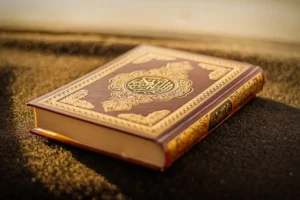
Benefits of Reciting Quran: A Spiritual Journey
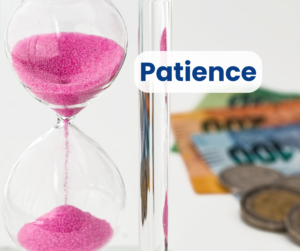
“Mastering Patience: The Virtues, Rewards, and Wisdom in Islam”
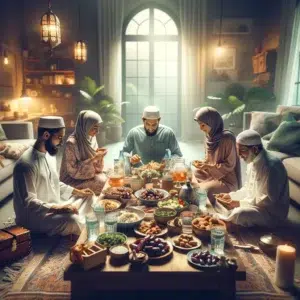
Understanding Suhoor and Iftar: Health and Wellness in Ramadan
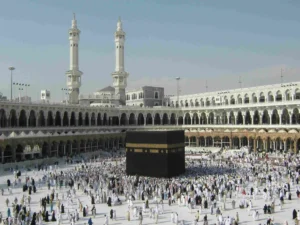
Tawaf al-Ifadah and Tawaf al-Wada: Concluding the Hajj
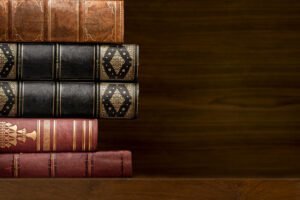
History of Four Imams in Islam

Role of Abu Lahab in the Earlier Days of Islam
- Quran and Hadith
- Worship Practices
- Ethics & Social

Recent Articles

Making a Difference: 7 Blessings of Donating to Orphans in Islam
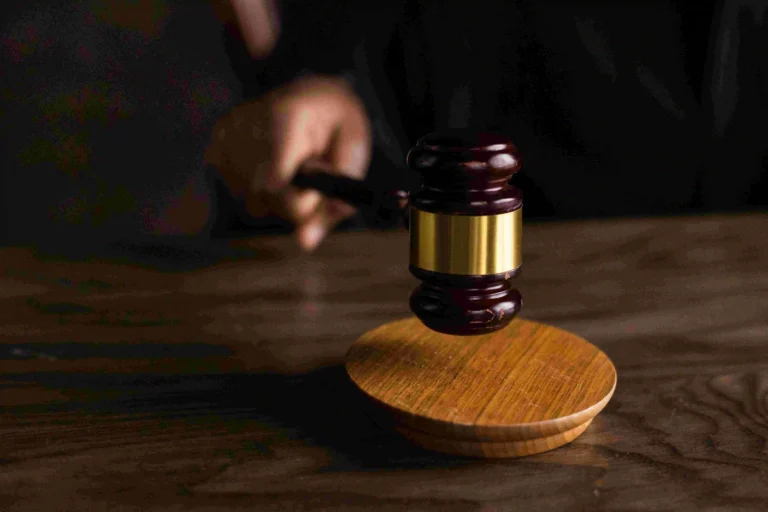
Justice and Equity in Islam: Principles and Practice
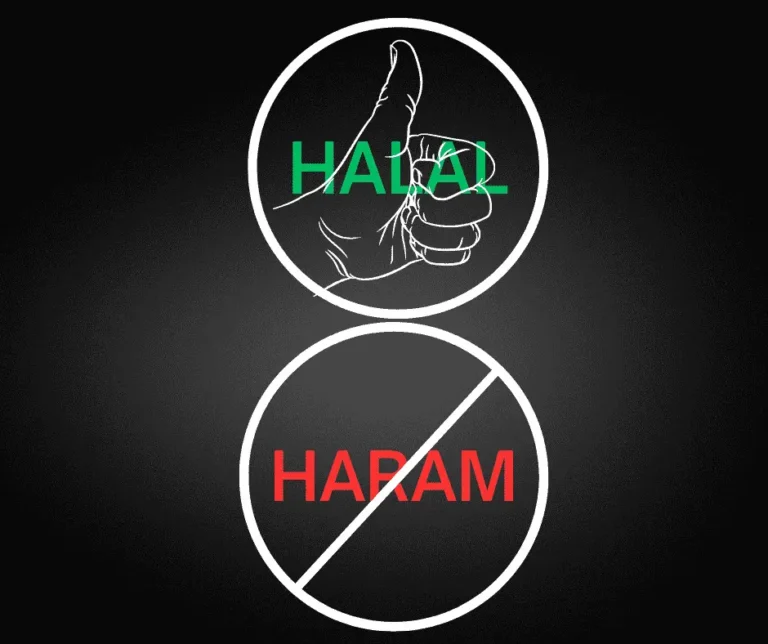
Islamic Dietary Laws: Halal and Haram Foods in Islam

Ethical Dressing in Islam: Principles, Practices, and Permissibility
Reflect and comment.
Join Our Newsletter
Get Blog Updates, Daily Hadees, and exclusive offers from Islamic Mentors. Subscribe now for valuable content delivered to your inbox.
“Guiding Hearts, Nurturing Souls, Islamic Mentors”
Get In Touch
- Aliabad Town, Bahawalpur, Punjab 63100, Pakistan
- [email protected]

- +20 2 25970400
- [email protected]

- Hijri Date "5 Dhu-al-Qi'dah 1445" Gregorian Date Monday, 13 May 2024
- The Miracle of the Night Journey an...
The Miracle of the Night Journey and Heavenly Ascension of Prophet Muhammad
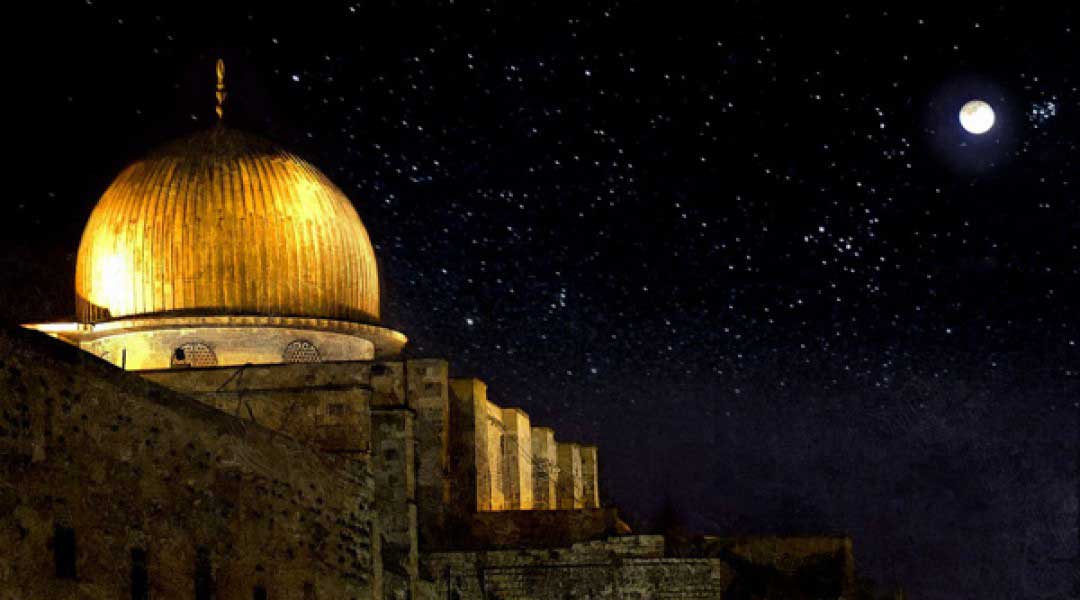
Glory be to Him, who carried His servant by night from the Holy Mosque to the Further Mosque the precincts of which We have blessed, that We might show him some of Our signs. He is the All-hearing, the All-seeing [Quran 17:1] Every year on 27th Rajab, Muslims around the world commemorate one of the most significant and unique events in Islamic history, known as Al-Isra` and al-Mi’raj, the Prophet’s night journey from Mecca to al-Aqsa Mosque in Jerusalem from where he embarked on the second leg of the journey heavenwards. Muslims in general consider this journey a miracle from Allah conferred exclusively upon Prophet Muhammad. It represents the climax of his spiritual journey that culminated in the ultimate gift, meeting and conversing with Allah the Almighty.
Background As with all the other Prophets who were sent before him, Prophet Muhammad was severely tested. Throughout the majority of his mission, he was met with great opposition and enmity, vilified and attacked by proud disbelievers. Prophet Muhammad’s relentless preaching to the people to abandon idol worship and turn to the One True God, and the growing number of those who believed with him despite the persecution and pitiless torture meted out against them, so alarmed the idolaters of Quraysh and their allies that they sought out a new strategy to persecute the Muslims. They drew up a pact to boycott and sever all social and commercial relations with the Muslims and the Banu Hashim and Banu Abdul Muttalib who refused to abandon their tradition of protection of one of their own. But the three-year-long blockade against the Muslims proved to be counterproductive to the efforts of the Quraysh and its allies for it only strengthened the Prophet’s faith and made his followers even more determined to protect him against attack. A few months after the boycott was lifted, two tragedies occurred that were to add to Muhammad’s troubles and test his faith and patience even more severely. Khadijah, Muhammad’s loyal wife who supported him with her love, goodness, and strong faith, passed away. With her death, Prophet Muhammad lost his sole source of comfort and reassurance against the heavy burdens of his cause. Shortly before this sad incident, his uncle, Abu Talib, who had so lovingly raised him and protected him throughout his mission, died. It was reported that he said of this time, “Quraysh never harmed me so much as after the death of Abu Talib.” With Abu Talib gone, it was an opportune time for the Quraysh to intensify their attacks against the Prophet and his followers. But his faith was unshaken and his conviction that Allah would give him the final victory never wavered. Whenever he saw his daughter, Fatima, cry at the insults and harm he endured, he would tell her, “Do not cry, O Fatima! Your father has Allah for his protector.” Crushed under the malevolent conduct of the Quraysh against him and despairing of all hope to turn them around, the Prophet decided to solicit the support of other tribes and preach his faith elsewhere. Without divine commission, he traveled alone to the city of Ta`if where, he hoped, Islam would be accepted. There, he approached the tribal elders who not only rejected him but incited the people and servants to pelt him with stones and hoot him out of the city. Disgraced, exhausted, and bleeding, Prophet Muhammad left the city and took shelter near a wall. He raised his hands to heaven and prayed to Allah, saying, “O Allah! To You I complain of my weakness and of my lack of resources and the humiliation I have received. O, Most Merciful and Compassionate! You are the Lord of the oppressed and You are my Lord … I do not care for anything except Your pleasure. I seek refuge in Your light which illuminates all darkness … I pray that I should never incur Your wrath and displeasure … There is no strength or power except through You.” It seemed that all doors were closed before him. But the Prophet displayed unshakable faith in Allah, patience, and perseverance in the face of insolent abuse and oppression. He was the living embodiment of the words of Allah the Almighty Who says, “And be steadfast in patience; for verily Allah will not suffer the reward of the righteous to perish” [Quran 11: 115]. And what better way to reward His servant than to confer upon him the miracle of the Isra` and al-Mi’raj? What better reward than to carry him to where no other prophet before him was taken, before the divine presence of Allah Himself?
Al-Isra` wal Mi’raj The great journey of al-Isra` and Mi’raj took place around one year before the Prophet’s migration to Medina. Within the Quran, the event is mentioned only briefly. The first verse of chapter 17 references the first phase of the journey; Allah the Almighty says, “Glory be to Him, who carried His servant by night from the Holy Mosque to the Further Mosque the precincts of which We have blessed, that We might show him some of Our signs. He is the All-hearing, the All-seeing” [Quran 17: 1]. Scholars agree that the Mi’raj, the second phase of the journey, is the subject of the following verses of Chapter Al-Najm, “By the star when it sets! Your companion has not strayed; he is not deluded; he does not speak from his own desire. The Quran is nothing less than a revelation that is sent to him. It was taught to him by [an angel] with mighty powers and great strength, who stood on the highest horizon and then approached—coming down until he was two bow-lenghts away or even closer—and revealed to God’s servant what He revealed. [The Prophet’s] own heart did not distort what he saw. Are you going to dispute with him what he saw with his own eyes? A second time he saw him: by the lote-tree beyond which none may pass near the Garden of Restfulness, when the tree was covered in nameless [splendor]. His sight never wavered, nor was it too bold, and he saw some of the greatest signs of his Lord” [Quran 53: 1-18]. Details of the Prophet’s journey is found in the vast body of hadith and sirah literature. The exact details however fluctuate from one text to another. There is a difference of opinion among scholars on several points of the story such as for instance where the Prophet was staying when he was visited by the archangel Jibril, where he was offered the cups of milk and wine, and where the splitting of the chest took place. All narratives however agree that Jibril wakes Muhammad from his sleep and leads him to the Buraq — a white mount, smaller than a mule and larger than a donkey — which takes him off to his journey. The Buraq carries the Prophet to the ‘Farthest Mosque’, the Al-Aqsa Mosque in Jerusalem. At some point, Jibril splits open the Prophet’s chest, removes his heart, and washes it with Zamzam water. He then brings a vessel made of gold containing wisdom and faith which he empties into the Prophet’s heart and then closes up his chest. The Prophet is offered two cups from which to drink, one containing milk and the other containing wine. The Prophet chooses to drink the milk. Jibril tells him, “Praise be to Allah Who guided you to the fitrah (right path)” [Bukhari]. With Jibril as his companion, the Prophet sets off on the Buraq at phenomenal speed to Al-Aqsa Mosque where he finds Abraham, Moses, and Jesus, among a company of the prophets assembled and waiting for him. The call to prayer is then made and the Prophet is invited to lead them in prayer. This part of the journey, the Isra`, represents the Prophet’s horizontal journey across the visible physical world. It is distinct from the Mi’raj and serves as a prelude to it. The Isra` contains initiation features. The sanctification and purification of the Prophet, represented by the splitting of his chest is a necessary preliminary to his ascension to the heavens. It prepares him for the journey to another dimension beyond time and space and opens up his heart to what he is about to see and experience. More important, it prepares him for the splendid culmination of his journey, the meeting with his Lord. The Isra` is also paramount in that it is symbolic of two things; first it shows Allah’s grace and favor upon the Prophet. Allah chooses none but him to lead all other prophets and messengers in prayer thereby consolidating his superior status. Second, it declares the universality of Islam and signifies that it is the seal of all other messages and laws. The next part of the journey is marked by Prophet Muhammad’s ascension to the heavens. Here, all the laws of nature and the concepts of time and space as we know cease to apply and everything the Prophet experiences and sees is beyond human comprehension. At each of the seven heavens, the Prophet accompanied by Jibril, encounters a gate and a watcher. At the gate of the lowest heaven, Jibril asks the gate-keeper to open the gate. The gate-keeper asks, “Who is it?” “It is Jibril,” he answers. The gate-keeper says, “Who is accompanying you?” Jibril says, “It is Muhammad.” The gate-keeper then says, “Has he been called?” Jibril says, “Yes.” The gate-keeper says, “He is welcomed. What a wonderful visit this is!” As the Prophet and his companion continue to travel upward to the other levels of heaven, the same questions are asked by the gate-keeper of each heaven and the same responses are given. At every heaven, the Prophet encounters a prophet. In the first heaven, he meets Adam, the father of mankind. The Prophet greets Adam with the greetings of peace. Delighted to see the greatest of his descendants, Adam, replies, “Welcome my son, welcome O Prophet of Allah!” Gabriel then takes the Prophet up to the other heavens where he encounters Jesus and Yehya in the second heaven; Yusuf in the third heaven; Idris in the fourth heaven; Harun in the fifth heaven; Musa in the sixth heaven; and finally Ibrahim, the father of prophets in the seventh heaven. In each heaven, Prophet Muhammad greets the prophet residing in it with greetings of peace and he is greeted back with, “Welcome dear brother, and welcome O Prophet of Allah!” During this heavenly journey, Prophet Muhammad sees several signs of Allah. He is shown Bayt al-Ma’moor (the qiblah of the angels) that sits above the Ka’bah, and scenes from paradise and hell. In hell, he sees people being tortured for sins such as fornication, usury, backbiting, and misappropriating the property of orphans. In paradise, the Prophet sees people enjoying the wondrous rewards promised to them by Allah in recompense for their faith and good deeds.The wonders he sees in paradise go beyond “what the eye has ever seen, what the ear has ever heard, and what the mind has ever conceived.” Jibril then escorts the Prophet to his next destination through the seventh heaven to the uppermost boundary, Sidrat al-Muntaha (the Lote-tree) whose fruits are as big as jugs and its leaves as big as elephant ears. He sees four rivers flowing out from beneath the tree, two visible ones and two hidden ones. The Prophet asks, "What are these, O Jibril? He replies, "As for the hidden ones, they are two rivers of Paradise. The visible ones are the Nile and the Euphrates." At Sidrat al-Muntaha, Jibril asks Mohammed to proceed alone. No one from among all of Allah’s creation has ever gone beyond Sidrat al-Muntaha for beyond it lies the throne of Allah the Almighty. Prophet Muhammad proceeds alone and reaches the climax of his journey. He stands in the presence of Allah the Almighty at a distance of “two bow-lengths away or even closer.” We do not have the details of the exchange that went on between Allah and His beloved Prophet. What we do know however, is that during this meeting Allah commissioned Prophet Muhammad and his community with prayer, the cornerstone of Islam after monotheism. Allah tells him, “I have placed a religious duty on you and your community of fifty prayers every day and every night.” On his descent through the heavens, Prophet Muhammad meets Musa once more who asks him about the commission he received from his Lord. When Musa learns about the number of prayers enjoined upon the community of Muhammad, he advises him to go back and implore Allah to reduce the number. The Prophet hurries back until he reaches the Tree and asks Allah to lighten the burden of his community. Allah agrees and reduces the number of prayers. When the Prophet returns to Musa and informs him of what has transpired, he is again advised to return to his Lord and ask for a further reduction. The Prophet continues to go back and forth between Musa and his Lord until Allah reduces the number to five daily prayers with each one counting as ten. Prophet Muhammad’s journey through the heavens comes to an end. He descends from the heavens to Jerusalem, unthethers the Buraq, mounts the saddle and goes back to Mecca. The Prophet wastes no time to inform the people of his journey and encounter with Allah in the hope of winning the hearts of the idolaters over to Allah. The very next morning, he recounts his journey to the people of Mecca. He is at once ridiculed and accused of lying. To test the veracity of his wondrous claims, the people ask him to describe Al-Aqsa Mosque which he does in detail. They ask him to describe the caravans he saw en route, and he says, “I saw the caravan of so-and-so. They had lost one of their camels and were searching for it.” In spite of all the details attesting to his truthfulness, the idolaters continue to mock him for his story and accuse him of lying and insanity. The Prophet’s Isra` and Mi’raj was indeed wonderful. The passage from Mecca to Jerusalem and then up to the heavens, the communication between the natural and the spiritual order, and coming in the presence of the Divine was the greatest and most singular event in the Prophet’s mission and in the entire history of Islam. It was an exclusive gift from Allah to His beloved Prophet to support him at a time when he was overwhelmed by disappointments and to show him his lofty status. It served to remind him that not only has Allah not forsaken him, but that He chose him alone from among all creation to reveal to him the heavenly and divine mysteries. The Isra` and Mi’raj, though an exclusive physical experience for Prophet Muhammad, prefigures in many aspects of Islam. It is possible therefore for Muslims to experience the journey and partake of its spiritual blessings and bounties. The journey may be viewed symbolically to represent our own journey in this world towards resurrection. Our own spiritual journey in this world to the next, may be seen as reflective of the Prophet’s Isra` and Mi’raj. However, we do not have to travel through space and time to attain the divine presence of Allah or to see His signs. His signs are everywhere for those who reflect. He says, “And He shows you (always) His signs” [Quran 40: 81], and “And say, “Praise be to Allah Who will soon show you His signs” [Quran 27: 93]. In many places in the Quran, Allah invites us to ponder His signs. Only those who observe and reflect can see that the universe is entirely composed of the signs of Allah and attest to His truth. Some of the signs of Allah which we experience everyday are enumerated in the words of Allah, “It is He who sends down rain from the sky: from it you drink, and out of it (grows) the vegetation on which you feed your cattle. With it He produces for you corn, olives, date-palms, grapes and every kind of fruit: verily in this is a sign for those who give thought. He has made subject to you the Night and the Day; the sun and the moon; and the stars are in subjection by His Command: verily in this are Signs for men who are wise. And the things on this earth which He has multiplied in varying colors (and qualities): verily in this is a sign for men who celebrate the praises of Allah (in gratitude). It is He Who has made the sea subject, that you may eat thereof flesh that is fresh and tender, and that ye may extract therefrom ornaments to wear; and you see the ships that plough the waves, that you may seek (thus) of the bounty of Allah and that you may be grateful. And He has set up on the earth mountains standing firm, lest it should shake with you; and rivers and roads; that you may guide yourselves; And marks and sign-posts; and by the stars (men) guide themselves. Is then He Who creates like one that creates not? Will you not receive admonition? If you would count up the favors of Allah, never would you be able to number them: for Allah is Oft-Forgiving, Most Merciful.” [Quran 16: 10-18]. The Isra` started from the Holy Mosque with certain initiation features. Prophet Muhammad’s heart is washed and purified and filled with wisdom and faith in preparation for his divine meeting with Allah the Almighty. Similarly, Muslims who wish to attain the divine presence of Allah must purify their hearts, strive in the cause of Allah against all temptations, stand firm in the face of suffering, and demonstrate steadfastness of faith. Allah the Almighty says, “And their Lord has accepted of them, and answered them: "Never will I suffer to be lost the work of any of you, be he male or female: Ye are members, one of another: Those who have left their homes, or been driven out therefrom, or suffered harm in My Cause, or fought or been slain,- verily, I will blot out from them their iniquities, and admit them into Gardens with rivers flowing beneath;- A reward from the presence of Allah, and from His presence is the best of rewards" [Quran 3: 195]. It is these servants of Allah who will reside in paradise, their faces bright “looking towards their Lord” [Quran 75: 23]. Jarir Ibn Abdullah narrated, “The Prophet came out to us on a night of full moon and said, ‘You will see your Lord on the Day of Resurrection as you see this (full moon)” [Bukhari]. Purity of heart and steadfastness of faith therefore represent our own Mi’raj towards our Lord, the Creator. This does not however mean that a Muslim who truly wishes to come in the presence of his Lord and commune with Him, must await this splendid reward in the hereafter. Every Muslims can attain divine presence through ritual prayer. Allah the Almighty says, ““And when my servants ask you concerning me, tell them I am near” [Quran 2: 186]. And the Prophet said, “When any of you stands in prayer, he is in communication with his Lord, so let him pay attention to how he speaks to Him” [Bukhari]. The fact that Prophet Muhammad led the prophets and messengers of Allah in prayer, demonstrates two things. First, that all the prophets and messengers were sent from Allah. We must therefore believe in all of them and respect them. Second, the message with which the Prophet came, Islam, is the last of all heavenly religions and, as such, is the universal religion to which all the people must submit until the Day of Resurrection. The Isra` and Mi’raj carry many great and noble meanings. Those meanings are not only relevant to the Prophet but to all Muslims and believers. At the Prophet’s time, the journey brought glad tidings to the believers and strengthened their faith. Similarly, when commemorating this occasion, Muslims are instructed to remember that for us, the Isra` and Mi’raj represents an inward journey towards the depths of our hearts, in search of Allah the Almighty, by which we will be able to realize our ultimate journey towards the eternal bliss of coming in His presence.
Related Articles
- The Night Journey: When the Unseen is Revealed
- What Do World Thinkers Say about Prophet Muhammad?
- A message of peace and compassion at Prophet Mohammad’s birth
- Depicting the Prophet Muhammad
- The Kharijites of the past & QSIS of today: two faces of the same coin?
Most recommended
- Philanthropy and Cooperation: Guiding Principles in a Changing World
- Dialogue: The Roadmap to Sustainable Development
- An Introduction to the Fiqh of Muslim Minorities
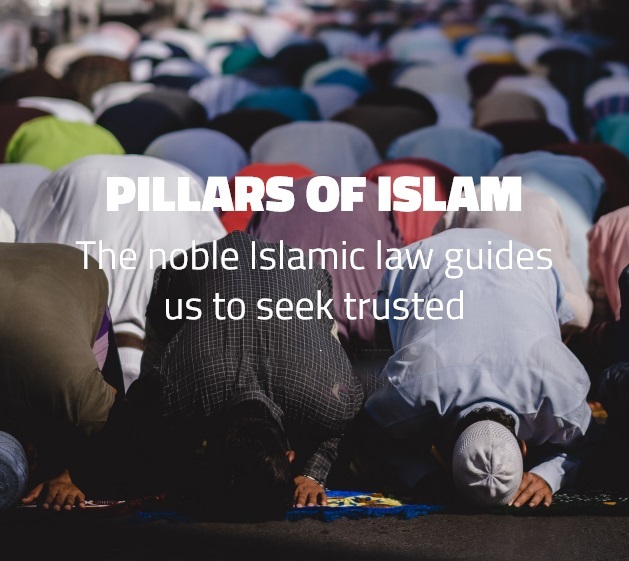
Pillars of Islam
- Seattle Art Museum
- Seattle Asian Art Museum
- Olympic Sculpture Park

- Get Tickets
- Subscribe to Email
- View Calendar
- Accessibility
${eognl:detailed.primaryMedia.caption}
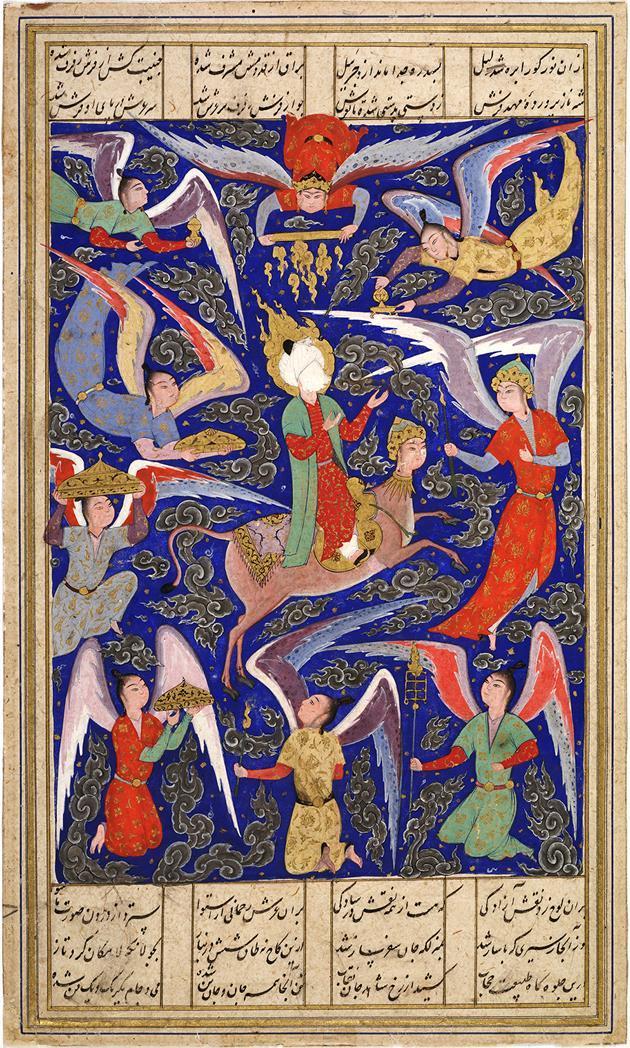
The Mi'raj (Muhammad's night journey)
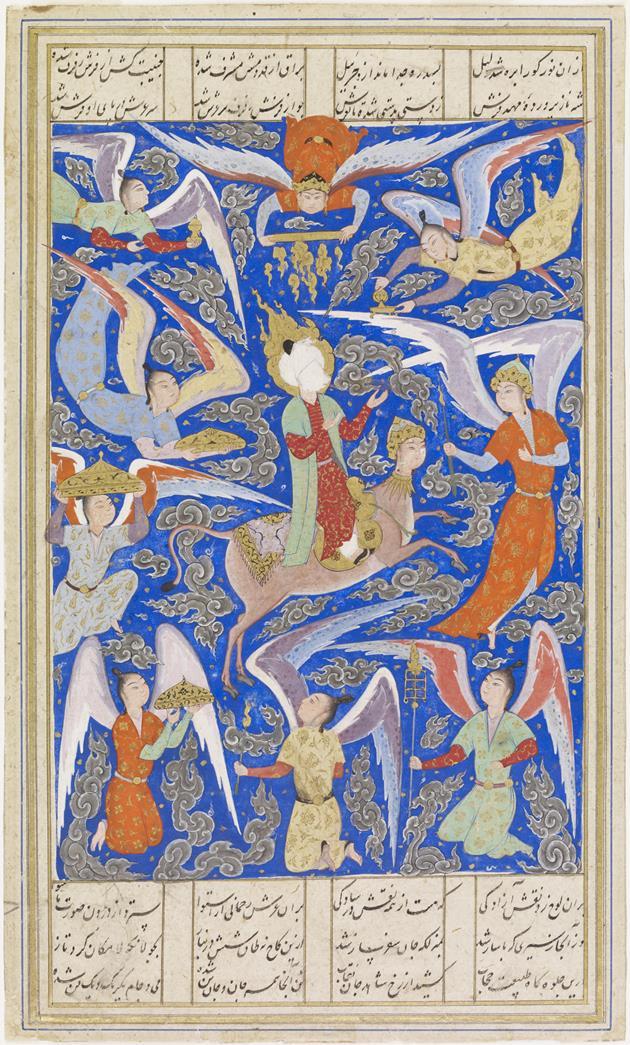
ca. 1550-1580